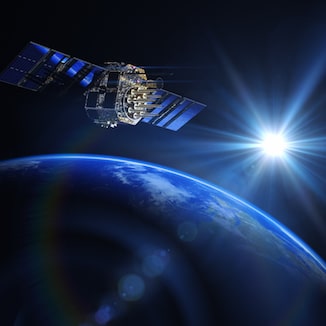
Virgin Galactic’s recent test flight took its SpaceShipTwo vehicle into outer space – well at least to an altitude more than 50 miles above the Earth. The spaceliner flew above the Mojave Desert and reached a speed of over 2,000 miles per hour. It is one of many private endeavors intent on making space travel, space freight, or space tourism into a commercially viable activity. Perhaps we are seeing the second space race.
According to Tom Captain of Captain Global Advisory speaking at the iBase-t Excelerate User Conference, the space industry has awakened from a long slumber. It is set to experience significant growth in the next five years due to a number of factors.
Private firms such as Virgin Galactic, SpaceX, and Blue Origin are helping to take the technology beyond the constraints of government. At the same time, the regulatory picture has grown more favorable for the emergence of this new arm of the space industry. That has accelerated demand and led to new applications.
Virgin Orbit, for example, spun off from Virgin Galactic with a focus on the launching of satellites. Like its Galactic cousin, Virgin Orbit utilizes an airborne launch via planes carrying rockets to a height a little over seven miles before releasing them. Instead of the lengthy lead times that currently plague satellite launches, Virgin intends to disrupt the industry with the ability to launch within 24 hours.
Space tourism, too, is seen as a major growth area. Hundreds of people have already forked out a lot of money to hitch a ride in a Virgin spaceship. It’s likely that many more will be willing to do so once routine flights are established. Captain noted that greater involvement in space has reduced lower earth orbit (LEO) costs by several orders of magnitudes.
The demand for greater connectivity around the world is another important driver. Some envision satellites as a more sustainable way to providing half of the planet with phone and internet access than setting up cellular towers every few miles across landmasses such as Africa and Asia. Businesses are going after this market and they need a lot of satellites in space to make this dream a reality.
And then there are other opportunities such as cleaning up the large quantities of junk flying around in our obit, refueling of space ships and high-altitude aircraft, and military initiatives in outer space. Captain noted that military interest has become more acute. However, to enter that market, governments and their associated contractors will have to change their ways if they wish to compete with this new wave of private innovators.
The U.S. Space Shuttle program, for example, cost around $20,000 per Kg for LEO flight. The SpaceX Falcon 9 cut that down to less than $2,000 per Kg. This is being achieved by the introduction of emerging technologies, new materials, better practices and latest digital systems that streamline operations.
The traditional powers of the aerospace sector, therefore, must learn from the actions of these new players if they are to remain competitive. Yes, SpaceX figured out how to reuse launch rockets. But even more fundamental are the IT systems and workflows in place to manage costs, control workflows, and streamline efficiency.
In some ways, it may be like the seventies and eighties when the U.S. dominance of the auto industry was threatened by the influx of low-cost vehicles from Asia, and better engineered cars from Germany. That was a long, hard lesson for U.S. carmakers. The transition is likely to be smoother for the aerospace sector. But only if they are willing to embrace new ideas.
Central among them are the digitization of the supply chain, more effective program management, and the use of advanced technologies. Digitization of systems, in particular, opens the door to tighter software integration, heightened collaboration, and greater profitability.
iBase-t Solumina can facilitate the journey to supply chain digitization for complex discrete manufacturers in aerospace and defense. As well as filling in the gaps that between PLM, ERP and other enterprise systems, it offers a way to modernize systems and processes in order to compete with new players intend to capturing market share from incumbents.

